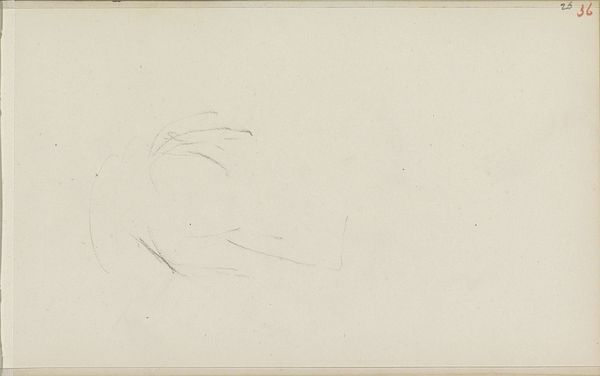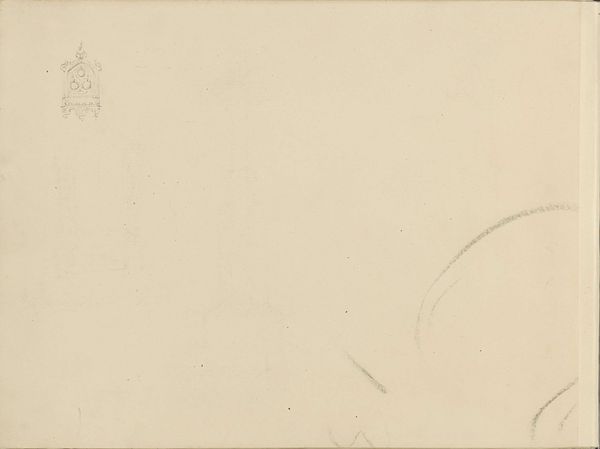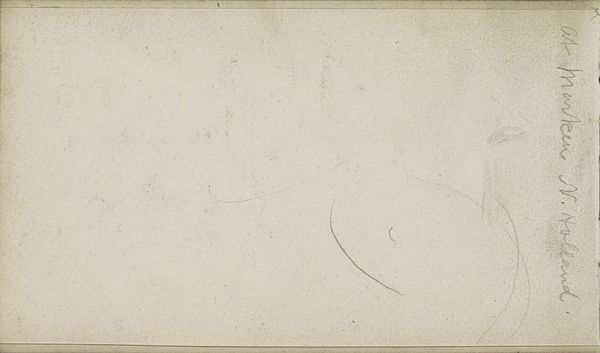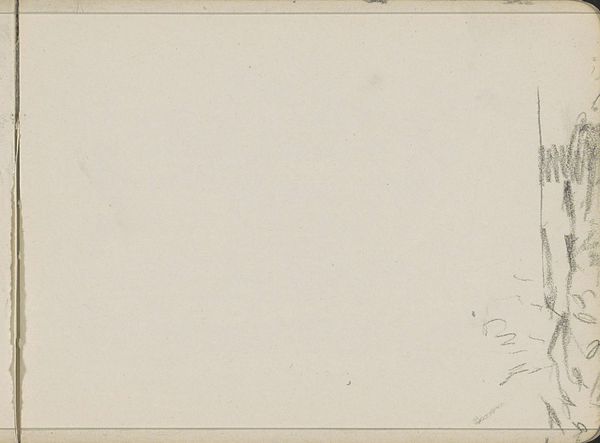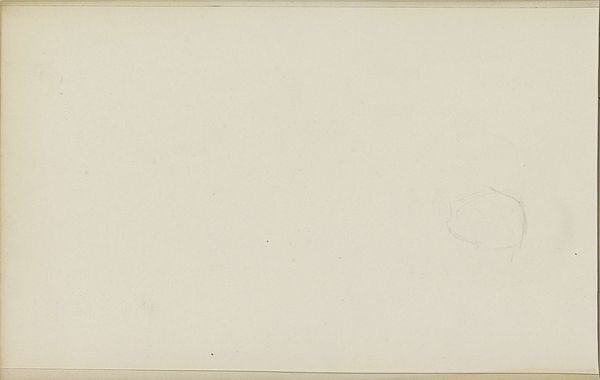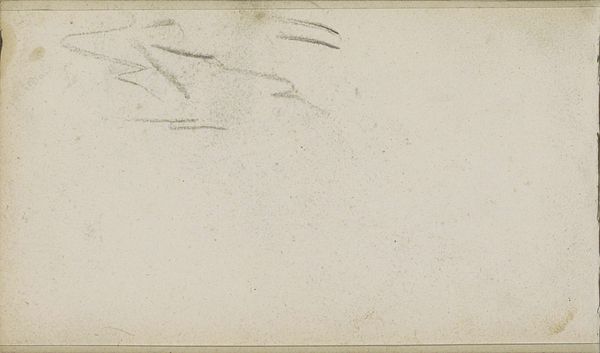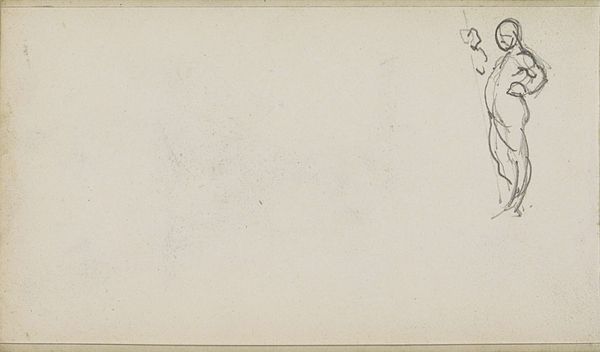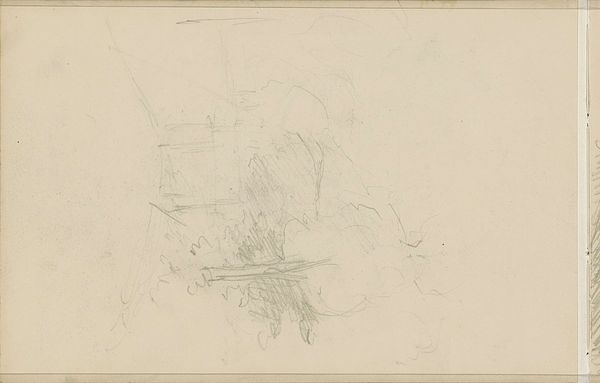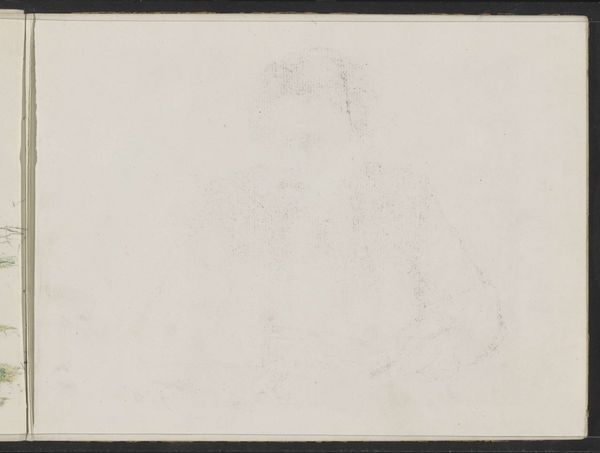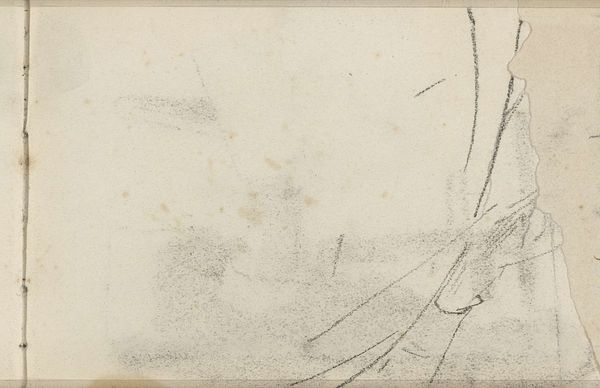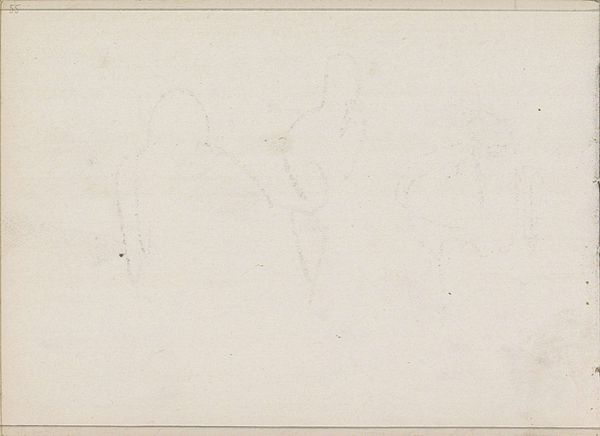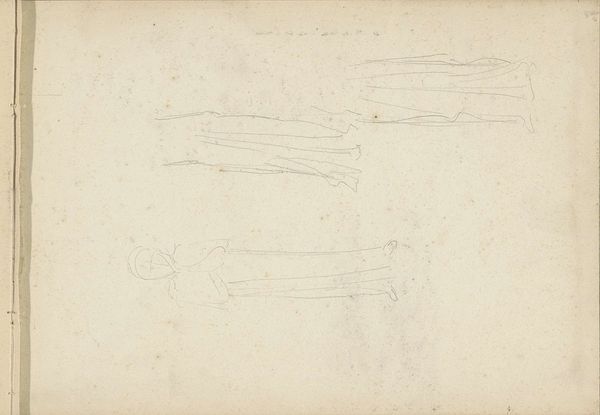
Copyright: Rijks Museum: Open Domain
Editor: So, here we have "Studie," a pencil drawing on paper by Johannes Tavenraat, dating somewhere between 1840 and 1868. It’s currently housed at the Rijksmuseum. It almost seems unfinished, or like a preliminary sketch. What can you tell me about it? Curator: I notice immediately the deliberate choice of materials: pencil on paper. Consider the accessibility of these materials during that period. Pencil production, still reliant on graphite mining, connected the artist to a wider industrial network, even if indirectly. Paper too, a product of a growing, if polluting, industry. Editor: So, the very materials place the drawing in a specific socio-economic context? Curator: Precisely! The apparent simplicity of pencil and paper belies the complex processes and labor involved in their production and distribution. The very act of drawing becomes a commentary on the means of artistic production. I wonder what implications the artist's access to those means reveals about their position in society? Editor: That's fascinating. I hadn't considered the industrial aspect of even simple art supplies. Curator: Think of the paper mill, the pencil factory—the workers, the conditions. How does that knowledge shape your interpretation of the image itself? Is the perceived "unfinished" nature a consequence of material limitations, economic pressures, or a conscious aesthetic choice reflecting a sensitivity to the broader conditions of labor? Editor: It definitely makes me question my initial assumptions. I guess I saw it as purely aesthetic, but now I see how much the means of production shape the art itself. Curator: And that, in turn, prompts us to think about what "romanticism" truly signifies.
Comments
No comments
Be the first to comment and join the conversation on the ultimate creative platform.
